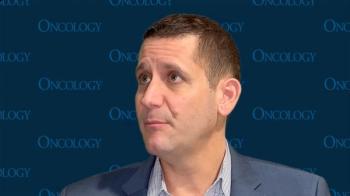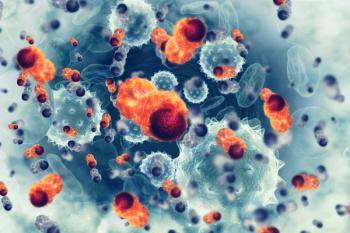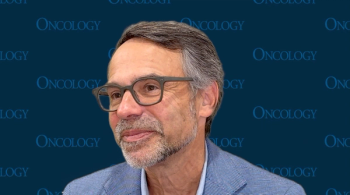
Efficacy Benefit Observed With All-Oral Arsenic Trioxide, All-Trans Retinoic Acid/Ascorbic Acid in Acute Promyelocytic Leukemia
Patients with promyelocytic leukemia saw an improved overall survival and relapse-free survival when treated with an all-oral regimen of arsenic trioxide, all-trans retinoic acid, and ascorbic acid.
A 3-year overall survival (OS) and a 97% relapse-free survival of 97% was noted when an all-oral regimen of arsenic trioxide (ATO), all-trans retinoic acid (ATRA), and ascorbic acid was given to patients with acute promyelocytic leukemia (APL), according to a presentation from the
“Use of an entirely oral AAA-based induction in a risk-adapted strategy that mitigated chemotherapy was highly effective and safe in newly diagnosed APL of all risk categories and all ages,” lead study author Harinder Gill, MD, FRCP, FRCPath, Department of Medicine, School of Clinical Medicine, LKS Faculty of Medicine, the University of Hong Kong in China, said in a press conference during the meeting.
APL is a subset of acute myeloid leukemia marked by t(15;17)(q24;q12)/PML::RARA gene alterations. Remission rates over 90% are common with ATRA and intravenous ATO plus chemotherapy or ATRA and chemotherapy. However, the rate of relapse falls between 5% and 10%, reaching as high as 20% with conventional ATRA/chemotherapy. Despite the relatively high rate of long-term survival, early death remains an issue for patients in the real-world setting without access to ATO, most commonly in resource-constrained countries. Although chemotherapy is an integral part of treatment, there is a need to reduce chemotherapy to lessen the rate of short- and long-term toxicities.
As such, investigators evaluated the efficacy and safety of an all-oral AAA-induction regimen in a risk-adapted strategy with no chemotherapy and minimal chemotherapy in low-risk and high-risk patients with APL. Patients were considered low risk if they had leukocyte presentation of less than 10 x 109/L and high risk if levels fell above 10 x 109/L.
Between January 1, 2018, and September 30, 2023, 51 men and 74 women were enrolled. The median patient age was 49 years (range, 3-91), though 5 patients were under the age of 18. Most patients were standard risk (n = 93; 74.4%); 25.6% (n = 32) were high risk. Eight patients (6.4%) had early deaths (intracerebral hemorrhage, n = 6; APL differentiation syndrome [APL-DS], n = 2); these patients were treated off protocol with oral AAA.
Overall, 117 patients received oral AAA–based induction on protocol, 92 (78.6%) received AAA alone and 25 (21.4%) received AAA in combination with daunorubicin.
Molecular responses of the all-oral induction, consolidation, and maintenance regimen were also evaluated. At a median follow-up of 31 months, results showed that all patients on the oral regimen treated on protocol achieved complete response. At the time of data censoring, 63 patients had completed 2 years of oral AAA maintenance. Regarding fatality, one relapse leading to death occurred from refractory APL and one death in CR1 occurred due to an unrelated cause.
Regarding safety, the most frequent non-hematologic toxicity was transaminitis (49.6%) and headache (36%). Neither cardiotoxicity and grade 3/4 hepatotoxicity related to oral ATO occurred, nor did treatment discontinuations due to oral ATO. Notably, no treatment-related deaths occurred.
Among patients who received AAA, APL-DS occurred in 68 (58%) patients after beginning AAA, all within the first 14 days, and all fully responsive to dexamethasone.
The regimen will be further evaluated in a multicenter setting in Asia (NCT04687176), and a pivotal trial is planned.
Reference
Gill H, Yim R, Chin L, et al. An entirely oral regimen of oral-arsenic trioxide/all-trans retinoic acid/ascorbic acid in newly-diagnosed acute promyelocytic leukaemia (APL): updated results of an ongoing multicentre trial. Blood. 2023;142(suppl 1):157. doi:10.1182/blood-2023-179644
Newsletter
Stay up to date on recent advances in the multidisciplinary approach to cancer.
















































































